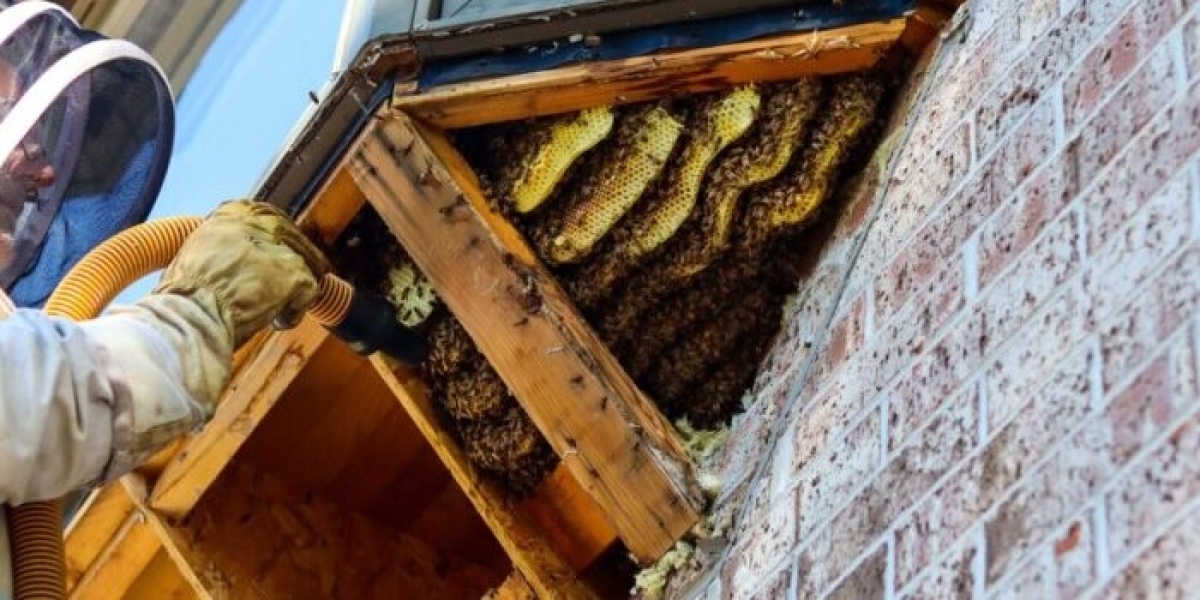Understanding Why Homes Need Professional Help
Many homeowners don’t expect to deal with bees around their property, yet it happens more often than you might think. The sudden appearance of a buzzing cluster on a porch pillar, a tree branch, or a vinyl siding seam can be alarming. At first, most people try ignoring it, hoping the bees will move on. Sometimes they do—but often they don’t. And that’s where Bees services become important for long-term safety and peace of mind.
To understand why these situations escalate, you have to look at how bees make decisions. They search for structures that offer warmth, shade, and small entry points. Unfortunately, New York homes—especially older brick and brownstone buildings—provide all of these. Once bees find the perfect cavity, they begin building comb fast, and with that growth comes a more complicated problem for the homeowner.
When Bees Choose Your Home as Their New Hive
Bees aren’t aggressive by nature, but their instincts shift once they begin developing a hive. What starts as a harmless swarm clustered temporarily on a branch can turn into a full hive tucked behind a vent or in a wall cavity. The danger isn’t usually the bees themselves—it’s the location they choose.
Some of the most common issues include:
Bees entering homes through small gaps around siding or window frames
Hives forming inside attic voids, roof edges, or porch ceilings
High foot-traffic areas becoming unsafe due to increased bee activity
These problems aren’t just inconvenient. They can be harmful, especially for families with children, seniors, or anyone with sensitivities to stings. And once honey and comb begin to accumulate inside a structure, removal becomes more complex and more urgent.
Homeowners in Queens and Brooklyn often encounter this due to the dense layout of homes, shared walls, and short distance between buildings. A hive might begin in a neighbor’s wall and travel directly into yours. This happens more often than people realize.
What Happens When Bees Are Left Alone
Leaving a hive undisturbed might seem like the simplest choice, but the consequences can escalate quickly. Within a few weeks, an active colony can expand to several pounds of honey and comb. The warmth inside New York homes, especially during summer, causes the wax to soften. That leads to dripping honey, structural damage, and the attraction of other pests like ants, roaches, and even rodents.
Inside walls, this becomes a bigger issue. Honey seepage can stain ceilings or create soft spots in drywall. Ventilation ducts may clog with wax debris. In older Brooklyn brownstones—many of which still have original cracks behind the molding—bees can travel freely between rooms, creating an unpredictable indoor hazard.
How Skilled Teams Restore Safety and Prevent Future Issues
This is where structured, humane, and knowledgeable intervention makes all the difference. Professional teams don’t simply spray or block entry points. They treat the situation with precision and respect—for both the bees and the property.
When experts arrive, the first step is inspection. They identify the hive’s size, depth, and exact location. Thermal tools and specialized equipment help map out the interior cavity. Afterward, a plan is developed that ensures safe removal without creating unnecessary structural damage.
Here is where bee removal queens ny becomes particularly relevant. In Queens, for example, many attached homes must be approached with extra care because walls are shared. Professionals understand how to remove bees while protecting both sides of the structure.
A Real Bee Problem Inside a Brooklyn Brownstone
To illustrate how this plays out in real life, here’s a realistic example from a residential call in Park Slope, Brooklyn.
A family living in a classic four-story brownstone noticed bees gathering near the top corner of their second-floor bedroom window. The home was built in the early 1900s, and like many in the area, it had small cracks along the original brickwork. The family assumed it was temporary. But within two weeks, they started hearing a faint buzzing sound inside the wall.
By the time they contacted professionals, bees were traveling along a small gap between the crown molding and the plaster. The hive had already stretched several feet between the joists. Thermal imaging confirmed a thriving colony.
Why Skilled Services Make a Real Difference
What separates professionals from DIY solutions is expertise combined with proper equipment. A homeowner may attempt to block an entry point, but sealing a hive inside the wall can lead to disastrous outcomes. Bees will attempt to escape wherever they can, even through indoor gaps. The honey will eventually melt, inviting new pests. It becomes more expensive and more complicated to fix later.
Trained teams, on the other hand, understand:
How bees behave when their hive is disturbed
How to remove them without harming the colony
How to protect the structure while working
How to prevent reinfestation through proper sealing
This combination of technical skill and environmental responsibility creates long-lasting results.
How Homeowners Can Prevent Bee Problems in the Future
Prevention doesn’t require drastic steps. A few simple habits can significantly reduce the chance of bees settling in unwanted places:
Sealing gaps around siding, vents, and utility lines
Managing tree branches close to walls or roofs
Repairing small holes in soffits or fascia boards
Monitoring attic spaces during warm seasons
Checking for bee activity around unused chimneys
Professionals often guide homeowners through these steps after completing a removal. It's part of ensuring lasting peace and preventing the same issues from repeating year after year.
When It’s Time to Call an Expert
If a homeowner notices bees clustering, entering small gaps, or gathering around the same spot repeatedly, calling a professional team early is the safest choice. Waiting can turn a small swarm into a multi-layered hive hidden deep in the structure. Experienced technicians bring clarity, calm, and proven solutions.
Conclusion
Bee problems can be stressful, especially when they affect daily routines or cause worry about safety. But with the right help, the situation can be resolved quickly and humanely. Expert teams know how to remove bees safely, protect your home, and prevent future issues with reliable solutions.
If you’re seeing bee activity around your home—or you suspect there may already be a hive—reach out to Best@Pest Exterminating. Our specialists are ready to inspect your home, explain your best options, and restore the comfort you deserve.








